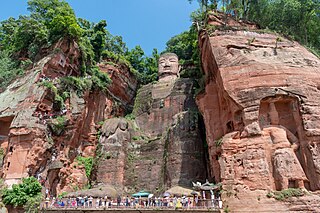
Sichuan is a province in Southwestern China occupying the Sichuan Basin and Tibetan Plateau between the Jinsha River on the west, the Daba Mountains in the north and the Yungui Plateau to the south. Sichuan's capital city is Chengdu; its population stands at 83 million. Sichuan neighbors Qinghai to the northwest, Gansu to the north, Shaanxi to the northeast, Chongqing to the east, Guizhou to the southeast, Yunnan to the south, and Tibet to the west.

The Daxue Range or Daxue Mountains (Chinese: 大雪山山脉, 大雪山; pinyin: Dàxuě Shān; Wade–Giles: Ta4-hsüeh3 Shan1; lit. 'Great Snow Mountains') are a great mountain range in the western part of Sichuan province in Southwest China. It is part of the Hengduan Mountains, a complicated system of mountain ranges of western Sichuan, which itself is adjacent to the eastern edge of the Tibetan Plateau.

Kham is one of the three traditional Tibetan regions, the others being Domey also known as Amdo in the northeast, and Ü-Tsang in central Tibet. The official name of this Tibetan region/province is Dotoe. The original residents of Kham are called Khampas, and were governed locally by chieftains and monasteries. Kham covers a land area distributed in multiple province-level administrative divisions in present-day China, most of it in Tibet Autonomous Region and Sichuan, with smaller portions located within Qinghai and Yunnan.
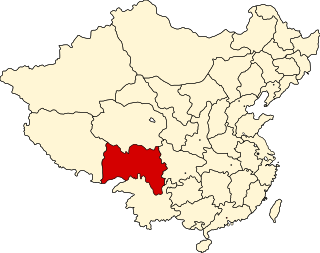
Xikang was a nominal province formed by the Republic of China in 1939 on the initiative of prominent Sichuan warlord Liu Wenhui and retained by the early People's Republic of China. The former territory of Xikang is now divided between the Tibet Autonomous Region and Sichuan province.

Ya'an is a prefecture-level city in the western part of Sichuan province, China, located just below the Tibetan Plateau. The city is home to Sichuan Agricultural University, the only 211 Project university and the largest regional comprehensive university in Ya'an. As of the 2020 Chinese census, Ya'an has a population of 1,434,603.

Ngawa Tibetan and Qiang Autonomous Prefecture, also known as Aba, is an autonomous prefecture of northwestern Sichuan, bordering Gansu to the north and northeast and Qinghai to the northwest. Its seat is in Barkam, and it has an area of 83,201 km2 (32,124 sq mi). The population was 895,200 by 2022.
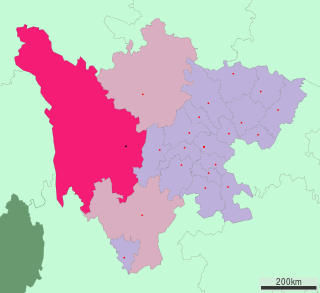
Garzê Tibetan Autonomous Prefecture, often shortened to Ganzi Prefecture, is an autonomous prefecture in the western arm of Sichuan province, China bordering Yunnan to the south, the Tibet Autonomous Region to the west, and Gansu to the north and northwest.
Baima is a language spoken by 10,000 Baima people, of Tibetan ethnicity, in north-central Sichuan Province and Gansu Province, China. Baima is passed on from parents to children in Baima villages. It is spoken within the home domain and is not used in any media of mass communication.

In Sichuan province, in an area incorporating the traditional Tibetan areas Kham and Amdo, Tibetan monks and police clashed in riots on 16 March in Ngaba county (Aba) after the monks staged a protest. It formed part of the 2008 Tibetan unrest and was one of two major events to happen in Sichuan during 2008, the other being the 2008 Sichuan earthquake in May 2008.

Baoxing County is one of the seven counties under the administration of Ya'an City, in west-central Sichuan Province, China, located along the upper reaches of the Qingyi River. It is a vital geopolitical crossroad, transportation hub, and most importantly, a biodiversity hotspot and type locality for many endangered species, including giant panda, dove tree, Chinese thrush, golden snub-nosed monkey and Oreolalax popei. UNESCO named Baoxing as a part of the World Heritage Site, the "Sichuan Giant Panda Sanctuaries - Wolong, Mt Siguniang and Jiajin Mountain" in 2006.

Sêrtar County or Serthar County is a county in the northwest of Sichuan Province, China, bordering Qinghai province to the north. It is one of the 18 counties under the administration of the Garzê Tibetan Autonomous Prefecture, covering some 9,340 square kilometres. Sêrtar, which means "golden freedom" in Tibetan, lies in the southeast of the Tibetan Plateau and in the historical region of Kham. The vast majority of the population is Tibetan, followed by Han Chinese.
The Batang uprising was an uprising by the Khampas of Kham against the assertion of authority by Qing China.
Zhongu (Zhonggu) Tibetan is a Tibetic language of Sichuan, China, once considered a dialect of Khams. It is spoken in Songpan County.
The Battle of Dartsedo was fought on January 28, 1701, between the Qing and Tibetan armies over the control of the strategic border town of Dartsedo.
Gserpa is an eastern Tibetic language of Sichuan. It is spoken by a few hundred or thousand people in Sêrba District, Sêrtar County, Sichuan, China and is different from the Amdo Tibetan language, the dominant Tibetan language in the surrounding region.
The Dao language or Daohua is a Chinese–Tibetan mixed language or creolized language of Yajiang County, Sichuan, China. Word order is SOV as in Tibetan, while the lexicon consists of words derived from both Chinese and Tibetan.
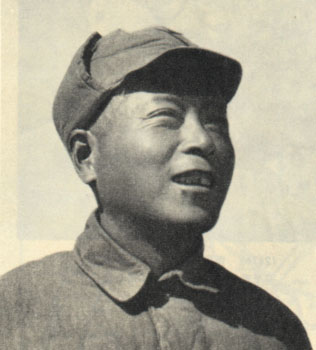
Li Jingquan was a Chinese politician and the first Chinese Communist Party Committee Secretary of Sichuan following the establishment of the People's Republic of China in 1949. He supported many of Mao Zedong's policies including the Great Leap Forward.
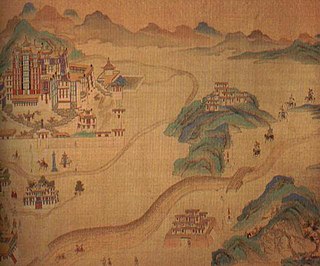
The 1720 Chinese expedition to Tibet or the Chinese conquest of Tibet in 1720 was a military expedition sent by the Qing dynasty to expel the invading forces of the Dzungar Khanate from Tibet and establish Qing rule over the region, which lasted until the empire's fall in 1912.

Sichuan pepper, also known as Sichuanese pepper, Szechuan pepper, Chinese prickly ash, Chinese pepper, Mountain pepper, and mala pepper, is a spice commonly used in Sichuan cuisine in China, in Nepal, and in northeast India. Despite its name, Sichuan pepper is not closely related to black pepper or chili peppers. It is made from plants of the genus Zanthoxylum in the family Rutaceae, which includes citrus and rue.














